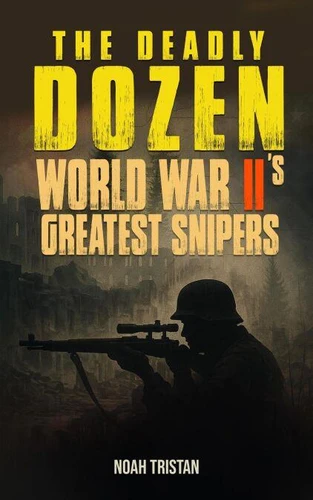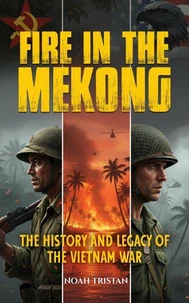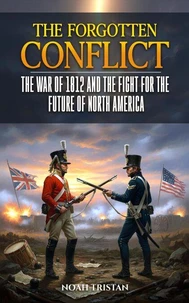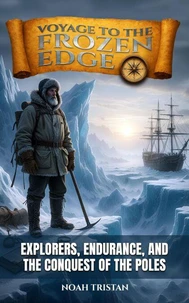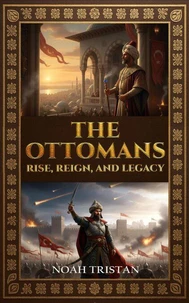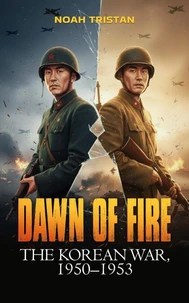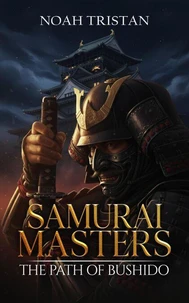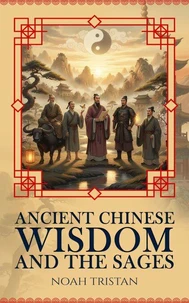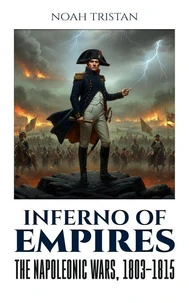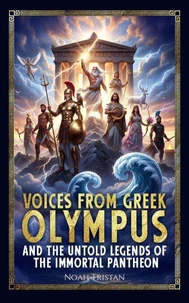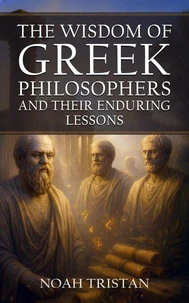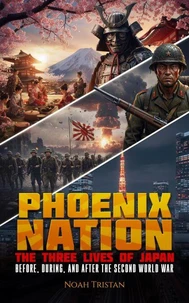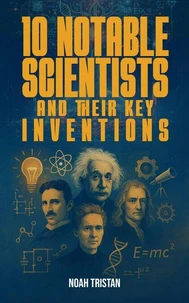Nouveauté
The Deadly Dozen: World War II’s Greatest Snipers
Par :Formats :
Disponible dans votre compte client Decitre ou Furet du Nord dès validation de votre commande. Le format ePub est :
- Compatible avec une lecture sur My Vivlio (smartphone, tablette, ordinateur)
- Compatible avec une lecture sur liseuses Vivlio
- Pour les liseuses autres que Vivlio, vous devez utiliser le logiciel Adobe Digital Edition. Non compatible avec la lecture sur les liseuses Kindle, Remarkable et Sony
 , qui est-ce ?
, qui est-ce ?Notre partenaire de plateforme de lecture numérique où vous retrouverez l'ensemble de vos ebooks gratuitement
Pour en savoir plus sur nos ebooks, consultez notre aide en ligne ici
- FormatePub
- ISBN8232919252
- EAN9798232919252
- Date de parution11/10/2025
- Protection num.pas de protection
- Infos supplémentairesepub
- ÉditeurHamza elmir
Résumé
The history of warfare is punctuated by the quiet, deadly efficiency of snipers, and the Second World War produced some of the most remarkable individuals in this art of lethal precision. Across the Eastern Front and beyond, men and women displayed extraordinary courage, patience, and marksmanship, shaping the outcomes of key battles and leaving an indelible mark on military history. Among these elite figures, Simo Häyhä, the Finnish "White Death, " earned legendary status for his 505 confirmed kills during the Winter War, employing unflinching discipline and intimate knowledge of terrain and camouflage.
Vasily Zaitsev, the Soviet hero of Stalingrad, inspired an entire generation of snipers with his combination of cunning, sharpshooting skill, and leadership, while training a cadre of deadly marksmen. Matthäus Hetzenauer, the Austrian sniper of the Wehrmacht, achieved 345 confirmed kills on the Eastern Front, demonstrating the lethal efficiency of the German sniping programme. Women played equally heroic roles.
Lyudmila Pavlichenko, one of history's deadliest snipers with 309 confirmed kills, became a symbol of female strength in combat, touring Allied nations to advocate for support and train fellow soldiers. Roza Shanina and Ziba Ganiyeva brought skill and bravery to frontline combat, with Shanina achieving dozens of confirmed kills and Ganiyeva combining sniper duties with reconnaissance and radio operations.
Tania Chernova fought in the Stalingrad resistance and trained under Zaitsev, contributing both to combat operations and the sniper legacy of the Soviet army. Other notable male snipers include Ivan Kulbertinov with 487 confirmed kills, Ivan Sidorenko with 500, Fyodor Okhlopkov with 429, and Vasil Kvachantiradze, whose tally of 517 made him one of the deadliest in Soviet service. Vladimir Pchelintsev was instrumental in both frontline sniping and the training of new marksmen, further amplifying the impact of his expertise.
Across nationalities and battlefields, these snipers demonstrated an extraordinary combination of patience, observation, and marksmanship, often under extreme conditions and personal risk. Their contributions extended beyond their confirmed kills. Many trained dozens of snipers, passed on tactical knowledge, and served as symbols of resistance and national pride. While some were recognised with high military honours, others endured hardship, injury, or obscurity, reflecting the immense human cost of their extraordinary skills.
Together, these snipers represent the lethal precision, resilience, and ingenuity that shaped the Second World War, leaving a legacy remembered in military history, literature, and popular culture as exemplars of the silent, decisive power of the sharpshooter.
Vasily Zaitsev, the Soviet hero of Stalingrad, inspired an entire generation of snipers with his combination of cunning, sharpshooting skill, and leadership, while training a cadre of deadly marksmen. Matthäus Hetzenauer, the Austrian sniper of the Wehrmacht, achieved 345 confirmed kills on the Eastern Front, demonstrating the lethal efficiency of the German sniping programme. Women played equally heroic roles.
Lyudmila Pavlichenko, one of history's deadliest snipers with 309 confirmed kills, became a symbol of female strength in combat, touring Allied nations to advocate for support and train fellow soldiers. Roza Shanina and Ziba Ganiyeva brought skill and bravery to frontline combat, with Shanina achieving dozens of confirmed kills and Ganiyeva combining sniper duties with reconnaissance and radio operations.
Tania Chernova fought in the Stalingrad resistance and trained under Zaitsev, contributing both to combat operations and the sniper legacy of the Soviet army. Other notable male snipers include Ivan Kulbertinov with 487 confirmed kills, Ivan Sidorenko with 500, Fyodor Okhlopkov with 429, and Vasil Kvachantiradze, whose tally of 517 made him one of the deadliest in Soviet service. Vladimir Pchelintsev was instrumental in both frontline sniping and the training of new marksmen, further amplifying the impact of his expertise.
Across nationalities and battlefields, these snipers demonstrated an extraordinary combination of patience, observation, and marksmanship, often under extreme conditions and personal risk. Their contributions extended beyond their confirmed kills. Many trained dozens of snipers, passed on tactical knowledge, and served as symbols of resistance and national pride. While some were recognised with high military honours, others endured hardship, injury, or obscurity, reflecting the immense human cost of their extraordinary skills.
Together, these snipers represent the lethal precision, resilience, and ingenuity that shaped the Second World War, leaving a legacy remembered in military history, literature, and popular culture as exemplars of the silent, decisive power of the sharpshooter.
The history of warfare is punctuated by the quiet, deadly efficiency of snipers, and the Second World War produced some of the most remarkable individuals in this art of lethal precision. Across the Eastern Front and beyond, men and women displayed extraordinary courage, patience, and marksmanship, shaping the outcomes of key battles and leaving an indelible mark on military history. Among these elite figures, Simo Häyhä, the Finnish "White Death, " earned legendary status for his 505 confirmed kills during the Winter War, employing unflinching discipline and intimate knowledge of terrain and camouflage.
Vasily Zaitsev, the Soviet hero of Stalingrad, inspired an entire generation of snipers with his combination of cunning, sharpshooting skill, and leadership, while training a cadre of deadly marksmen. Matthäus Hetzenauer, the Austrian sniper of the Wehrmacht, achieved 345 confirmed kills on the Eastern Front, demonstrating the lethal efficiency of the German sniping programme. Women played equally heroic roles.
Lyudmila Pavlichenko, one of history's deadliest snipers with 309 confirmed kills, became a symbol of female strength in combat, touring Allied nations to advocate for support and train fellow soldiers. Roza Shanina and Ziba Ganiyeva brought skill and bravery to frontline combat, with Shanina achieving dozens of confirmed kills and Ganiyeva combining sniper duties with reconnaissance and radio operations.
Tania Chernova fought in the Stalingrad resistance and trained under Zaitsev, contributing both to combat operations and the sniper legacy of the Soviet army. Other notable male snipers include Ivan Kulbertinov with 487 confirmed kills, Ivan Sidorenko with 500, Fyodor Okhlopkov with 429, and Vasil Kvachantiradze, whose tally of 517 made him one of the deadliest in Soviet service. Vladimir Pchelintsev was instrumental in both frontline sniping and the training of new marksmen, further amplifying the impact of his expertise.
Across nationalities and battlefields, these snipers demonstrated an extraordinary combination of patience, observation, and marksmanship, often under extreme conditions and personal risk. Their contributions extended beyond their confirmed kills. Many trained dozens of snipers, passed on tactical knowledge, and served as symbols of resistance and national pride. While some were recognised with high military honours, others endured hardship, injury, or obscurity, reflecting the immense human cost of their extraordinary skills.
Together, these snipers represent the lethal precision, resilience, and ingenuity that shaped the Second World War, leaving a legacy remembered in military history, literature, and popular culture as exemplars of the silent, decisive power of the sharpshooter.
Vasily Zaitsev, the Soviet hero of Stalingrad, inspired an entire generation of snipers with his combination of cunning, sharpshooting skill, and leadership, while training a cadre of deadly marksmen. Matthäus Hetzenauer, the Austrian sniper of the Wehrmacht, achieved 345 confirmed kills on the Eastern Front, demonstrating the lethal efficiency of the German sniping programme. Women played equally heroic roles.
Lyudmila Pavlichenko, one of history's deadliest snipers with 309 confirmed kills, became a symbol of female strength in combat, touring Allied nations to advocate for support and train fellow soldiers. Roza Shanina and Ziba Ganiyeva brought skill and bravery to frontline combat, with Shanina achieving dozens of confirmed kills and Ganiyeva combining sniper duties with reconnaissance and radio operations.
Tania Chernova fought in the Stalingrad resistance and trained under Zaitsev, contributing both to combat operations and the sniper legacy of the Soviet army. Other notable male snipers include Ivan Kulbertinov with 487 confirmed kills, Ivan Sidorenko with 500, Fyodor Okhlopkov with 429, and Vasil Kvachantiradze, whose tally of 517 made him one of the deadliest in Soviet service. Vladimir Pchelintsev was instrumental in both frontline sniping and the training of new marksmen, further amplifying the impact of his expertise.
Across nationalities and battlefields, these snipers demonstrated an extraordinary combination of patience, observation, and marksmanship, often under extreme conditions and personal risk. Their contributions extended beyond their confirmed kills. Many trained dozens of snipers, passed on tactical knowledge, and served as symbols of resistance and national pride. While some were recognised with high military honours, others endured hardship, injury, or obscurity, reflecting the immense human cost of their extraordinary skills.
Together, these snipers represent the lethal precision, resilience, and ingenuity that shaped the Second World War, leaving a legacy remembered in military history, literature, and popular culture as exemplars of the silent, decisive power of the sharpshooter.

